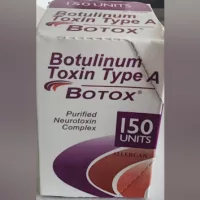
beerkoff/iStockBy DR. JAY BHATT, OLIVIA RUBIN, DR. MARK ABDELMALEK, MATTHEW MOSK and EDEN DAVID, ABC News
(NEW YORK) — If a second wave of the novel coronavirus emerges in the U.S. this fall, medical experts said patients arriving in American emergency rooms will likely have an entirely different experience than what urgently sick patients saw earlier this year — the benefit of hard-learned lessons from the deadly disease.
“If there is a second wave in September, we will be protecting our patients and our staff in better ways, and will have the knowledge of the first wave to guide us in the best ways to treat patients,” said Dr. Bill Jaquis, president of the American College of Emergency Physicians.
Richard M. Schwartzstein, who heads pulmonary and critical care at Beth Israel Deaconess Medical Center in Boston, predicts there will be less anecdotal medicine and more evidence-based care than the first time around.
“The difference now is that these options are better refined and being studied more carefully,” Schwartzstein said. “Care is more rational with less sense of desperation.”
There is still no way to know whether COVID-19 cases will surge in the fall, as some have predicted. And it remains unclear if the U.S. could face a serious risk of hospitals being overwhelmed with patients if the outbreak roars back to life.
But public health officials said they do believe there has been a marked evolution from the chaotic early days of the coronavirus pandemic. And they say that even facilities that haven’t been directly hit by the virus’ first wave will have people to turn to, information available that wasn’t before, and time to put surge plans in place.
As with most everything, practice helps. As of this report, the U.S. has seen more than 1.7 million cases of COVID-19 and more than 101,000 deaths. From that grim experience, hospitals have, through repetition and careful study, refined everything from the choice of early medications to the methods they use to position patients in bed, where doctors hope they’ll be treated with powerful new therapies.
With more understanding, better preparation, better methods
One of the most challenging aspects of treating the outbreak was that it emerged quickly, before most hospitals could truly prepare.
Hospitals scrambled to scale up their supplies to meet the sudden and desperate need. At certain points nurses were asked to ration their use of critical gear — storing their one respirator mask per day in a brown paper bag.
Dr. Josh Sharfstein, former state public health official and assistant dean at Bloomberg School of Public Health, told ABC News hospitals now have a better sense of their needs. To prepare for any surge, he said hospitals will be ordering large reserves of protective gear, and they will have designed plans to increase intensive care and ventilator capacity.
“The health care system was largely taken by surprise in the spring,” Sharfstein said. “It’s everyone’s shared responsibility to prevent a repeat in the fall.”
When patients started arriving in those early days, doctors were laying eyes on the novel coronavirus and its bizarre array of symptoms for the first time. Now many have strategies in place.
Health care experts realized, for instance, that they needed to check patients arriving at hospitals for early signs of blood clots, which has emerged as a common hallmark of a dangerous COVID-19 infection.
Caregivers have also found benefits of rolling even mildly ill coronavirus patients on their stomachs, finding that using prone positioning eases the stress on fluid-filled lungs.
And physicians have honed their ability to recognize the needs of patients with more serious infections.
“We understand better how to manage these patients on mechanical ventilators and the time it takes for many of them to improve,” Schwartzstein said.
Fine tuning medications
When it comes to drug treatment, health care officials said they have seen how some medications are in greater demand, such as Remdesivir, which proved helpful in reducing hospital stays for those with advanced cases of the illness during early testing.
Production of the drug is ramping up, and Health and Human Services Secretary Alex Azar told governors this week that, as of Saturday, initial shipments have now reached every American state and territory.
Azar told the state officials he had “more good news”: the company Gilead, which manufactures Remdesivir, agreed to donate an additional 333,000 vials to the U.S. government, bring the total to 940,000 vials — enough to treat approximately 120,000 patients.
Other medications that attracted early interest in intensive care units have been set aside in many cases. Schwartzstein told ABC News medical centers in Boston had halted the use of hydroxychloroquine.
The once-promising drug had shown early signs of success in China, and been championed by President Donald Trump from the White House podium. But last week, the scientific journal Lancet published results from a 96,000-patient observational study that concluded that hydroxychloroquine had no effect on Covid-19 and may have even caused some harm.
“The scientific data is really quite evident now about the lack of efficacy,” Dr.Anthony Fauci, the Trump administration official helping lead the pandemic response, told CNN.
Plasma, antibodies show promise
As pharmaceutical companies and public health researchers toil in labs in search of additional medications, many believe even more effective treatments for those who come down with COVID-19 will be on hand at American hospitals come fall — even if a vaccine is still months away.
Azar told governors he sees a bright future for the various approaches doctors will use when confronting the virus in the months to come.
“On therapeutics, we continue to advance three strategies,” Azar said.
The first, he said, is the use of convalescent plasma, collected when someone who has recovered has donated their blood. The blood is then separated into plasma that contains virus-fighting antibodies that can be used for others who are sick.
It’s one of the few treatments showing early indications that it can help. Back in March, only a small number of facilities were able to perform convalescent plasma treatments. But in just three months, the treatment is now an option at over 2,300 hospitals across the country, according to the COVID-19 expanded access program.
Dr. Michael Joyner, an anesthesiologist at the Mayo Clinic, said experts are currently working on plans for how best to collect and distribute convalescent plasma if a second wave hits this fall.
“Where we are in the fall depends,” he said. If more evidence emerges showing the treatment is effective, he expects it to be more widely used.
The second strategy, Azar said, involves the use of what he called “hyper immunoglobulin,” which he said basically involves commercially processing plasma donations from multiple people to create a more consistent and powerful antibody treatment.
“You’re giving thousands or millions of antibodies, but the problem is that once you need another dose you need to bleed more people and start over again,” explained Dr. James E. Crowe, who serves as the director of Vanderbilt Vaccine Center. “Hyper immunoglobulin” treatment with standardized serum could be more effective on a mass scale.
Transferring antibodies from recovered patients to those who are actively infected is not fool-proof, though. Since everyone’s antibody production following infection can slightly differ, researchers try to identify ideal donor candidates — those with the highest levels of neutralizing antibodies.
The technique, Crowe said, is an “old school” method, but “might well be the first antibody [treatment] we see used.”
With new therapies, a bridge to a vaccine?
Azar said the third strategy he expects to see widely deployed involves antibodies that are actually themselves produced outside of humans, what are known as monoclonal antibodies.
“We’ve got over 20 companies with monoclonal antibodies in development and working on prioritizing and focusing our development efforts and manufacturing capacities on those,” he said.
This approach — similar to hyper immunoglobulin therapy — is meant to simulate or mimic the antibodies made in your own body.
“Basically we can move immunity from one person to another and the person who receives it has instant immunity,” said Crowe.
Crowe said this method is preferred over-hyper immunoglobulin therapy “because it’s reproducible and much better defined.”
But historically, it has been a more expensive approach because of the extensive process required to produce and purify the antibodies on such a large scale. Moreover, the benefits don’t last very long — typically around 90 days — so the value of these drugs is limited.
Still, if there was a viral surge that sent patients to the emergency room in the fall, there are indications that these drugs could be on hand, with some hope it could help halt disease progression.
At the Duke University Human Vaccine Institute in North Carolina, scientists are already developing a monoclonal antibody treatment that can be bottled and shipped out. Dr. Gregory Sempowski, the director of the Regional Biocontainment Laboratory at the Institute, called the potential treatment “a next-generation version of convalescent plasma.”
Duke is one of four locations across the country working on this treatment. Their efforts have been financed by the Defense Advanced Research Projects Agency (DARPA), the nation’s premier military lab. Pharmaceutical companies are also in the hunt. One firm, Regeneron, has indicated it is just weeks away from starting clinical trials.
Crowe predicts that monoclonal antibody treatment will become available before vaccines — as early as the end of this year or early 2021.
“Most people think of antibodies as a bridge because they give us immunity for a period of time until vaccines are ready,” said Crowe.
But ultimately, a vaccine, if proven safe and effective, is still the endgame for the viral battle, experts said.
“When you’re vaccinated, your body makes antibodies. It’s like a factory that doesn’t turn off,” Crowe said. “The durability and duration of immunity with vaccines is longer.”
Copyright © 2020, ABC Audio. All rights reserved















